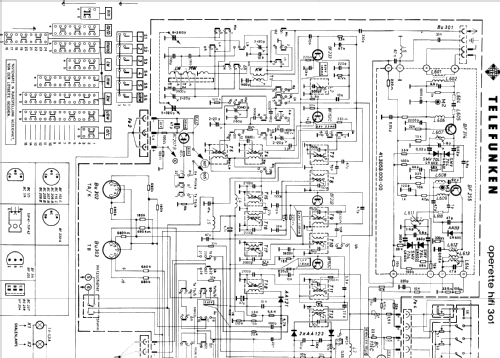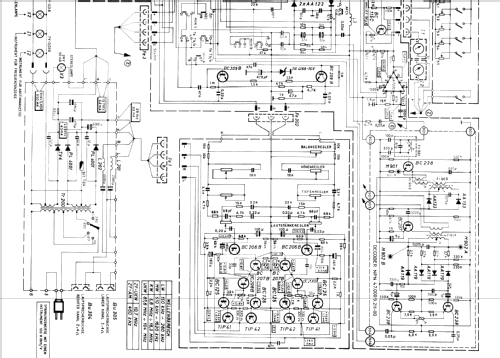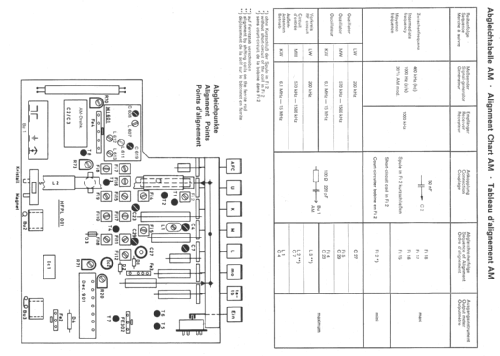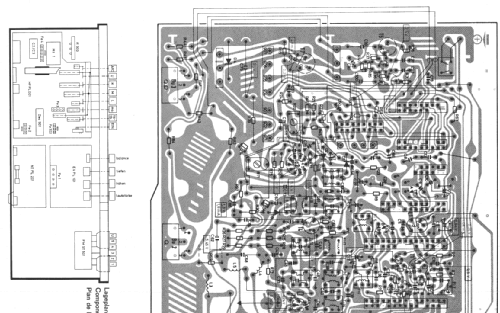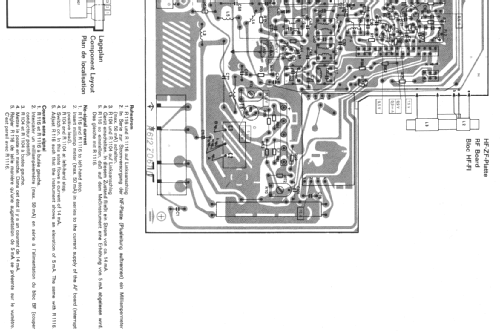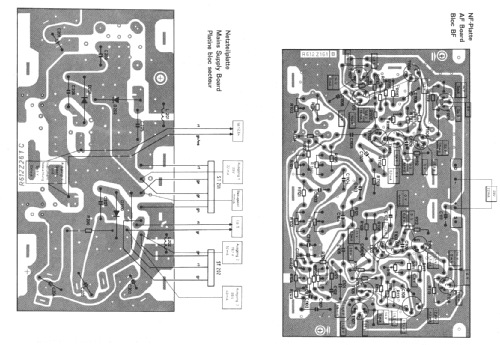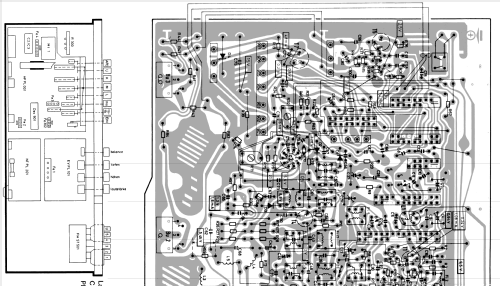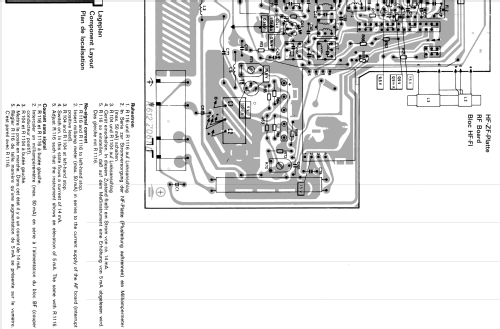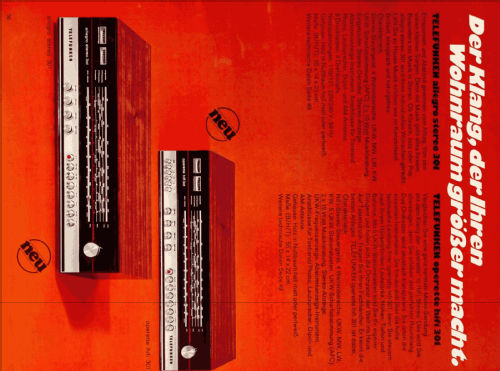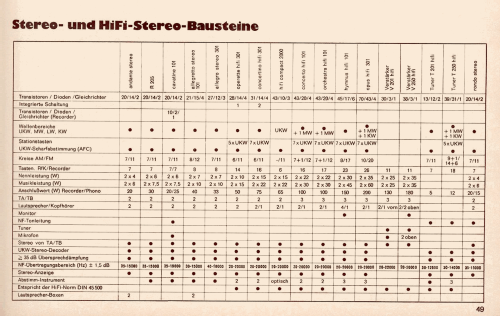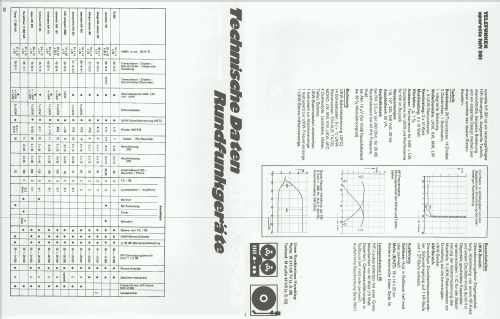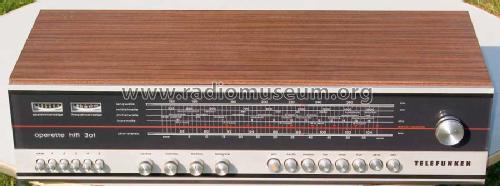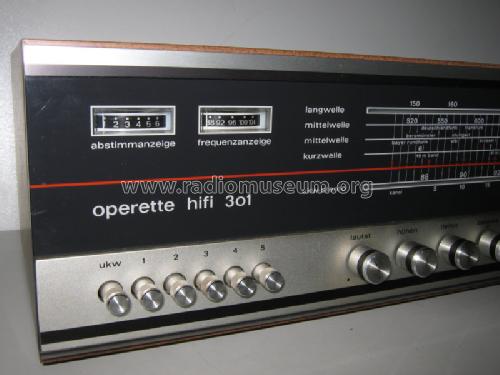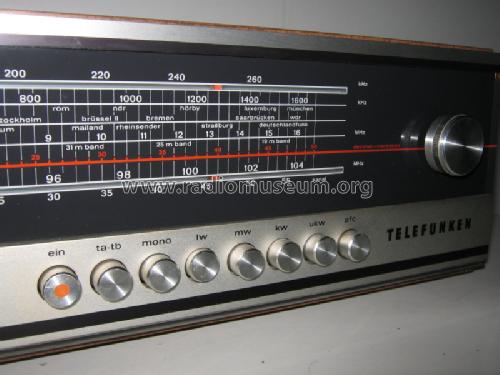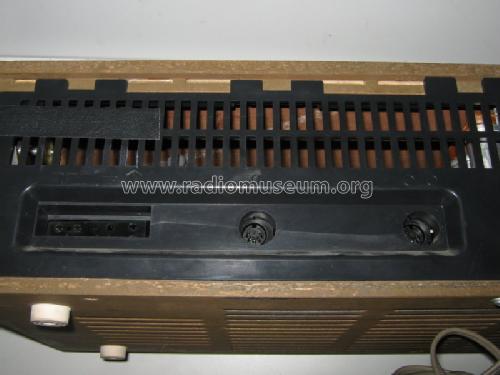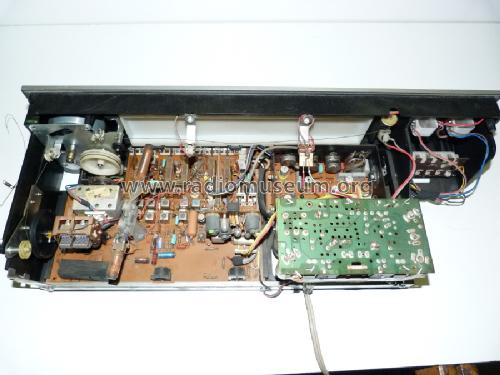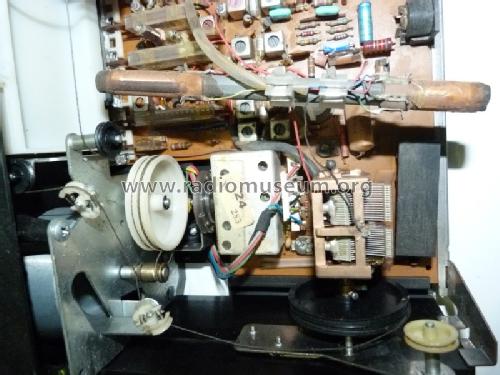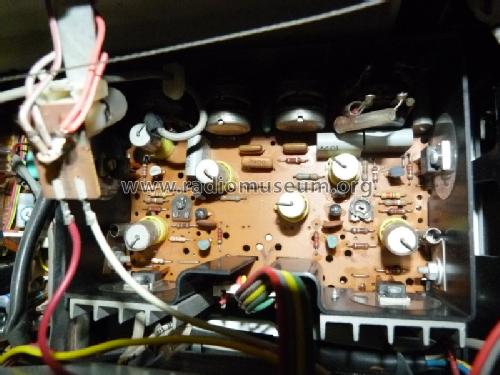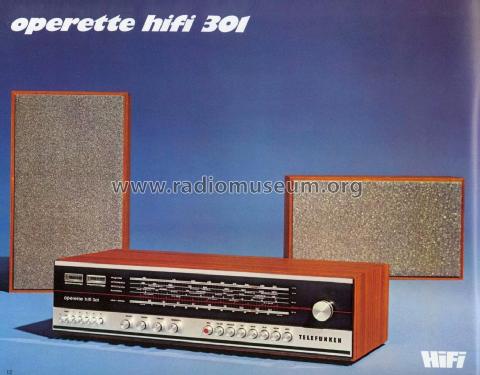- Hersteller / Marke
- Telefunken Deutschland (TFK), (Gesellschaft für drahtlose Telegraphie Telefunken mbH
- Jahr
- 1971–1973
- Kategorie
- Rundfunkempfänger (Radio - oder Tuner nach WW2)
- Radiomuseum.org ID
- 28363
Klicken Sie auf den Schaltplanausschnitt, um diesen kostenlos als Dokument anzufordern.
- Anzahl Transistoren
- 28
- Halbleiter
- Hauptprinzip
- Superhet allgemein; ZF/IF 460/10700 kHz
- Anzahl Kreise
- 6 Kreis(e) AM 13 Kreis(e) FM
- Wellenbereiche
- Langwelle, Mittelwelle, Kurzwelle und UKW.
- Betriebsart / Volt
- Wechselstromspeisung / 110-127; 220-240 Volt
- Lautsprecher
- - Dieses Modell benötigt externe(n) Lautsprecher.
- Belastbarkeit / Leistung
- 20 W (30 W max./spitze)
- Material
- Gerät mit Holzgehäuse
Die GFGF Zeitschrift Funkgeschichte bringt interessante Artikel zu Radios, Funkwesen und Medien. Bei Radiomuseum.org finden Sie die vollständigen Hefte früherer Ausgaben als PDF zum Download.
- von Radiomuseum.org
- Modell: Operette HiFi 301 - Telefunken Deutschland TFK,
- Form
- Regalgerät wie HiFi-Komponente für Bücherwand.
- Abmessungen (BHT)
- 550 x 140 x 220 mm / 21.7 x 5.5 x 8.7 inch
- Bemerkung
- ICs: 1.
HiFi-Stereo-Steuergerät. NF-Verstärker mit 2 Endstufen je 10 W (Sinus).
- Nettogewicht
- 6.3 kg / 13 lb 14 oz (13.877 lb)
- Originalpreis
- 398.00 DM
- Datenherkunft extern
- Erb
- Datenherkunft
- Handbuch VDRG 1971/1972
- Literatur/Schema (1)
- -- Schematic
- Weitere Modelle
-
Hier finden Sie 3582 Modelle, davon 3170 mit Bildern und 2126 mit Schaltbildern.
Alle gelisteten Radios usw. von Telefunken Deutschland (TFK), (Gesellschaft für drahtlose Telegraphie Telefunken mbH
Sammlungen
Das Modell Operette HiFi befindet sich in den Sammlungen folgender Mitglieder.
Forumsbeiträge zum Modell: Telefunken: Operette HiFi 301
Threads: 1 | Posts: 1
Dear radiofriends
I needed to replace the cord to this radio using the complex diagram and without any instructions that Telefunken has elaborated (d_tfk_operette_hifi301_seil.pdf).
The best most practical process I got was this:
-
In the first step is to get a cord with about 2,5 meters, there will be a bit of cord left, but it is better to spare than after the end of work is missing.
-
The AM variable capacitor is opened, ie at the highest frequency (1600 KHz), and the drum that drives the FM coil and thus to secure the coil core at the highest frequency (104 MHz).
-
Fix one of the ends of the cord with the recommended length on the drum (black) of the variable capacitor AM, in the hole of the knot, keeping the variable always in the same position, wrap the cord with three turn counterclockwise.
-
After passing by the metal roller below, which in turn, the cord will pass through the tuning shaft, in the lower rail giving two turns of cord clockwise.
-
Stretch the cord by following the arrows as shown in figure 1, until the cord enters the drum (white) of FM, wind the cord in the lower rail clockwise with three turns, and the fourth turn will be given in the upper rail of the same FM drum, and through a groove the drum has, passing the cord through the groove continuing to wind in the same direction only one turn of cord then passing the cord through the tuning shaft, in the upper rail giving two turns of cord counter clockwise.
-
Then pass the cord through the plastic roller (with small springs inside), going around it, following the arrows with the cord passing through the small roller of black plastic.
-
Wind the cord through the bottom (clockwise) on the AM drum until it locks into the spring shown in figure 1.
So the cord assembly is finished, with this small contribution I hope to have helped those who in the future encounter the same problem as me.
P.S.
If a member has factory instructions or has found an easier process than mine, I suggested that they put it here because it would help many radiofriends.
Best Regards
Júlio Branco, from Portugal

Fig.1

Júlio Branco, 30.Aug.18
